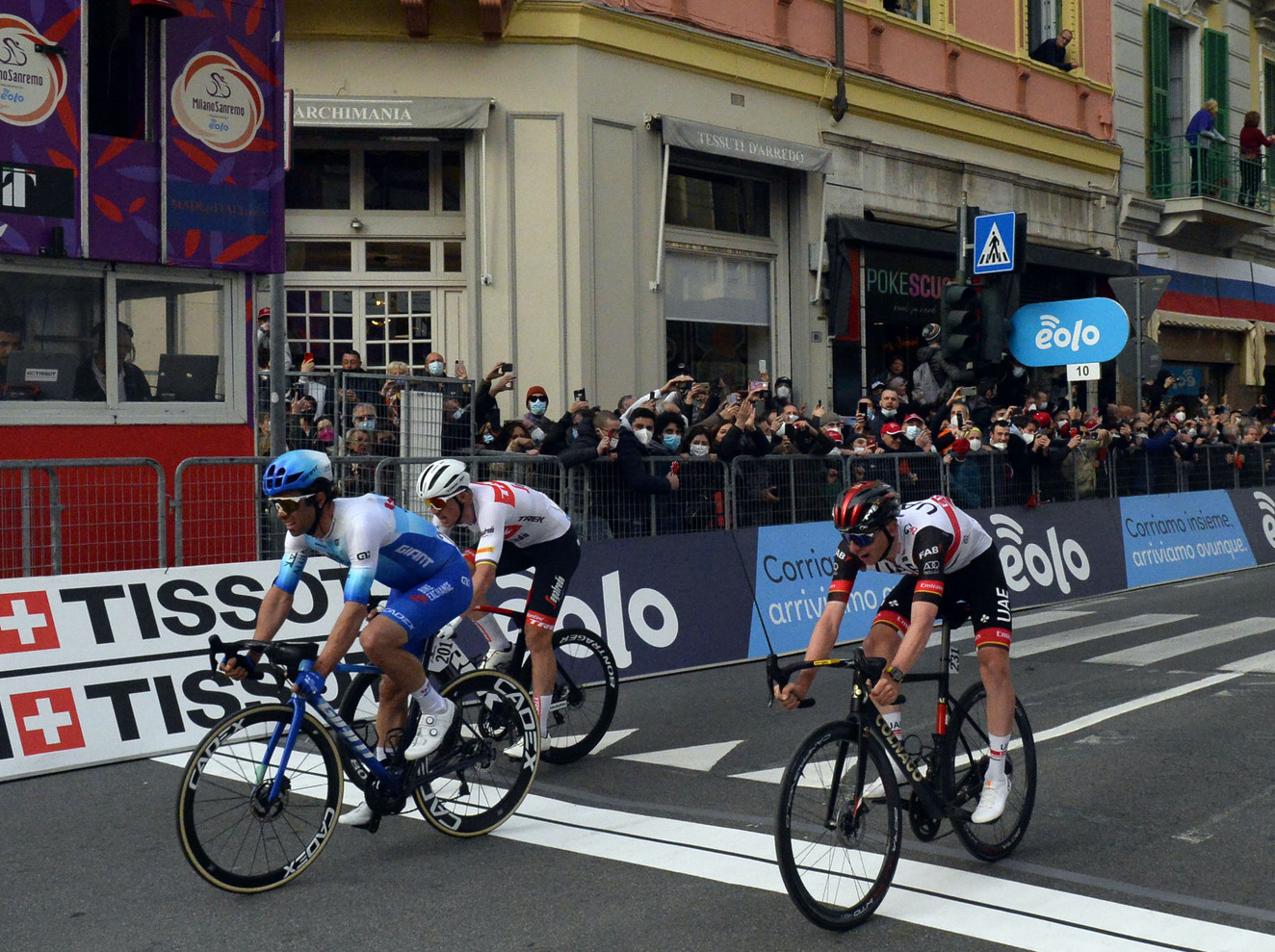Matthews: Motorbikes had a big impact in the final of Milan-San Remo
Australian sprints to fourth on Via Roma after Strade Bianche crash

Rapid in a sprint, resistant on a climb, Michael Matthews (BikeExchange-Jayco) is always something of a guarantee at Milan-San Remo, even in a year like this one, when his preparation was blighted by ill fortune.
The Australian was, almost inevitably, once again prominent on Saturday, but come the Via Roma, the great race remained as maddeningly close and far away as ever before. He crossed the line in fourth place, two seconds down on winner Matej Mohorič (Bahrain Victorious), pipped to the podium by the returning Mathieu van der Poel (Alpecin-Fenix).
Half of Matthews’ 10 participations at La Primavera have now ended with a top 10 finish, but few editions had a winnowing process quite as exacting as this one. Tadej Pogačar’s presence in the race lent it an altogether different tone, and precious few sprinters could withstand the forcing of his UAE Team Emirates squad over the Cipressa.
“It was definitely much faster on the Cipressa than other years. As we expected, UAE wanted to make it a hard final to eliminate everyone’s teammates so it couldn’t come down to a bunch sprint and they seemed to do that,” Matthews told Cyclingnews outside his team bus at the finish.
Matthews lives just a few kilometres along the coast in Monaco and Pogačar is an occasional training partner. He knew that Pogačar’s onslaught on the Poggio was ineluctable and he had an idea, too, of just how forceful those accelerations might be. Undeterred, Matthews managed to stay within touching distance as the Tour de France champion bludgeoned the front group with four separate attacks on the final climb.
“I think they got a group of 30 of us over the Cipressa, and then on the Poggio Tadej just continued to attack, but I think the wind didn’t favour him too much and we could all pretty much stay there,” said Matthews.
“The accelerations were actually easier for me to follow today. The high speed on the Cipressa was a bit harder, but the stop-start on the Poggio was actually better for me. But when Mohorič went on the descent, I was maybe four wheels back behind him, and I couldn’t get around the guys to follow him.”
Get The Leadout Newsletter
The latest race content, interviews, features, reviews and expert buying guides, direct to your inbox!
Van Aert complained afterwards that Van der Poel had been the only rider in the chasing group who was fully committed to the pursuit of Mohorič, whose already peerless descending technique was augmented by his innovative use of a dropper post. Matthews expected more collaboration, too, but he also pointed to the inadvertent help the race motorbikes had provided to Mohorič once he eked out an advantage on the descent.
“Mohorič went on the descent and I think whoever was on the wheel, let the wheel go and he got a gap and then the motorbikes dragged him away,” Matthews said.
“When you have all the favourites in that bunch, I sort of expected them to fight it out and to bring the bunch back to fight for victory. In the end, it was just a bit of a mess, nobody really wanted to fully commit to bring Mohorič back, and I think the motorbikes had a big impact today in the final.”
The motorbike traffic at Milan-San Remo has been reduced considerably over the years – witness, for instance, the Quadrophenia-esque cavalcade that led Marco Pantani up the Cipressa in 1999 – but Matthews is not the first rider to draw attention to the issue at the WorldTour level in recent seasons.
“I guess there just has to be a rule that the motorbikes need to be a certain distance away, otherwise they can have a massive effect on the race,” Matthews said. “But you can’t take anything away from Matej, he made the right move at the right time and he won the race. But going back to the motorbikes, there has to be a fixed rule that the motorbikes can’t be within a certain distance of the riders.”
Matthews’ buildup to the Classics was affected first by COVID-19 in February and then by the crash that forced him to abandon his Strade Bianche debut. Tirreno-Adriatico was, hardly surprising, something of an ordeal, but his display here offered encouragement for the weeks ahead. He lines out at the Volta a Catalunya next week in preparation for the Tour of Flanders and Amstel Gold Race.
“I think Strade Bianche obviously didn’t work out the way we planned and I was really behind the eight ball in Tirreno,” Matthews said. “So to come back here a week later in Milan-San Remo and be fourth is obviously good for the confidence moving forward to the racing coming up.”

Barry Ryan was Head of Features at Cyclingnews. He has covered professional cycling since 2010, reporting from the Tour de France, Giro d’Italia and events from Argentina to Japan. His writing has appeared in The Independent, Procycling and Cycling Plus. He is the author of The Ascent: Sean Kelly, Stephen Roche and the Rise of Irish Cycling’s Golden Generation, published by Gill Books.